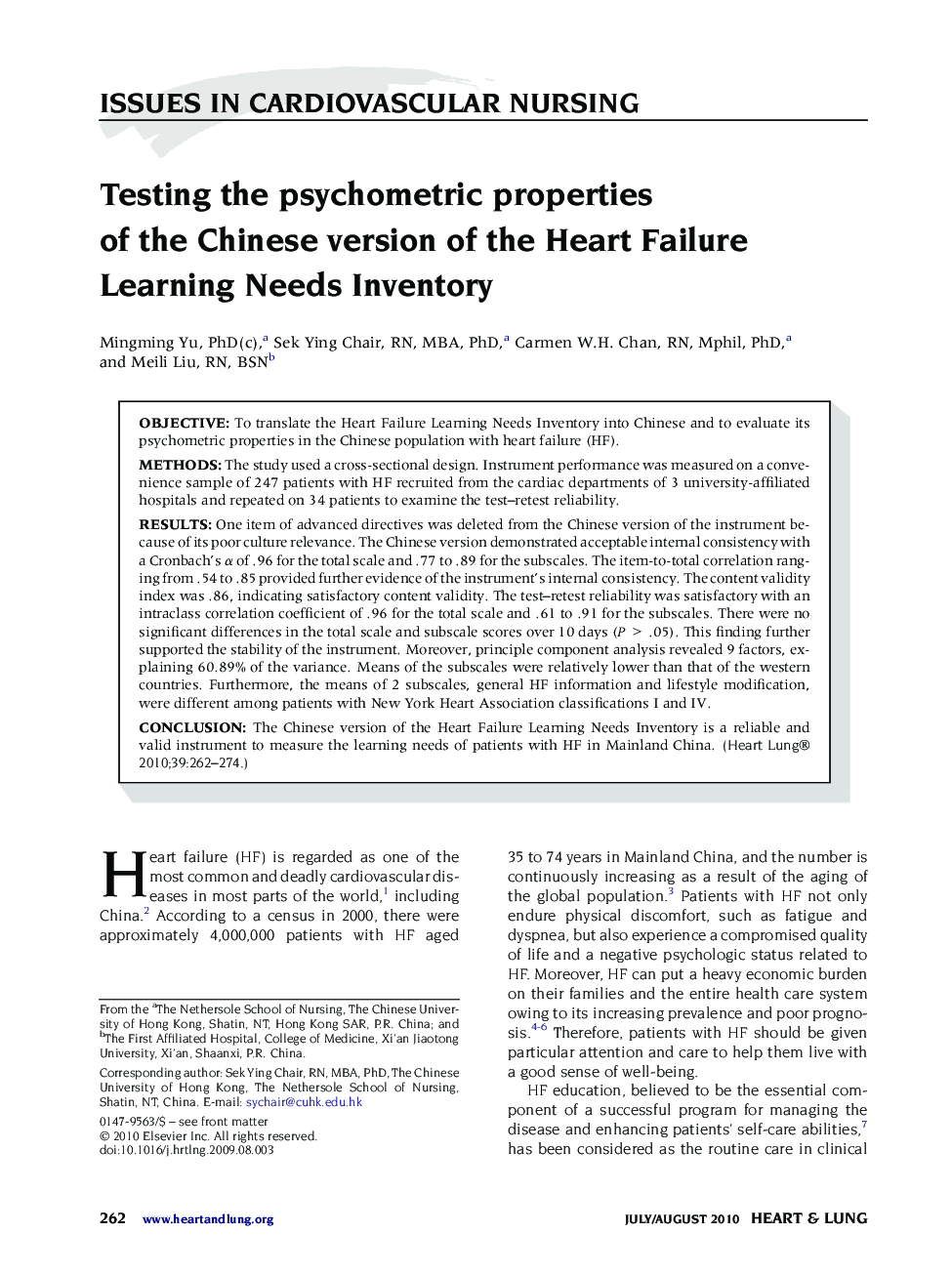| Article ID | Journal | Published Year | Pages | File Type |
|---|---|---|---|---|
| 2651865 | Heart & Lung: The Journal of Acute and Critical Care | 2010 | 13 Pages |
ObjectiveTo translate the Heart Failure Learning Needs Inventory into Chinese and to evaluate its psychometric properties in the Chinese population with heart failure (HF).MethodsThe study used a cross-sectional design. Instrument performance was measured on a convenience sample of 247 patients with HF recruited from the cardiac departments of 3 university-affiliated hospitals and repeated on 34 patients to examine the test–retest reliability.ResultsOne item of advanced directives was deleted from the Chinese version of the instrument because of its poor culture relevance. The Chinese version demonstrated acceptable internal consistency with a Cronbach's α of .96 for the total scale and .77 to .89 for the subscales. The item-to-total correlation ranging from .54 to .85 provided further evidence of the instrument's internal consistency. The content validity index was .86, indicating satisfactory content validity. The test–retest reliability was satisfactory with an intraclass correlation coefficient of .96 for the total scale and .61 to .91 for the subscales. There were no significant differences in the total scale and subscale scores over 10 days (P > .05). This finding further supported the stability of the instrument. Moreover, principle component analysis revealed 9 factors, explaining 60.89% of the variance. Means of the subscales were relatively lower than that of the western countries. Furthermore, the means of 2 subscales, general HF information and lifestyle modification, were different among patients with New York Heart Association classifications I and IV.ConclusionThe Chinese version of the Heart Failure Learning Needs Inventory is a reliable and valid instrument to measure the learning needs of patients with HF in Mainland China.
